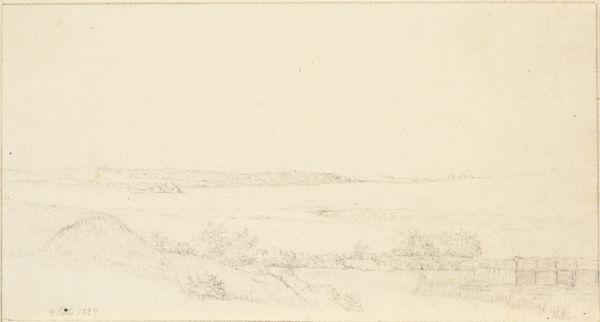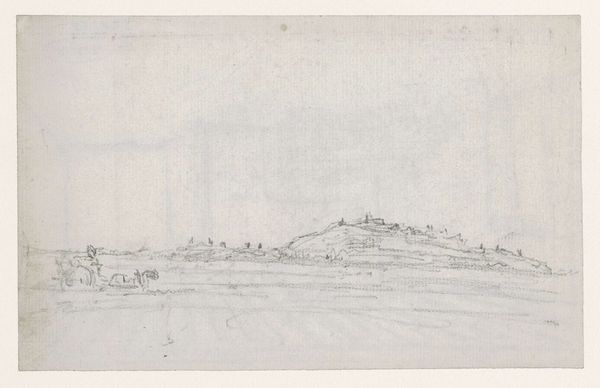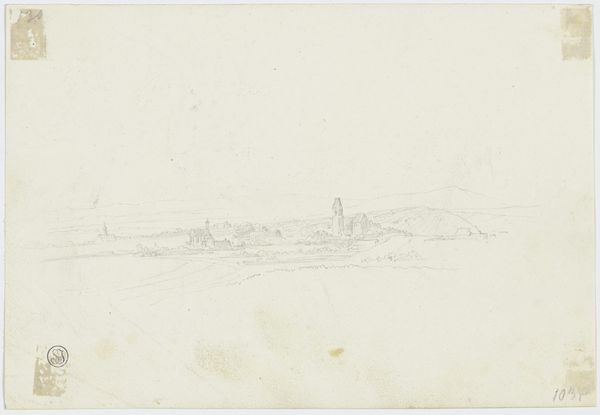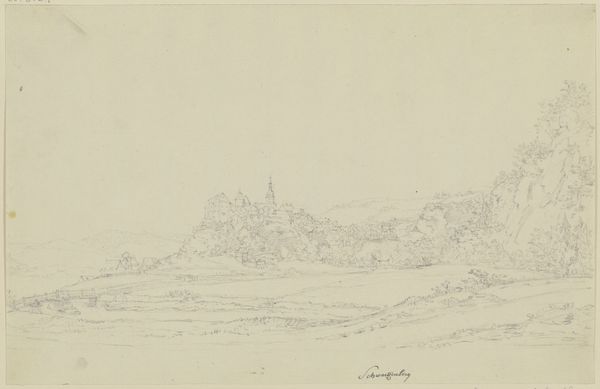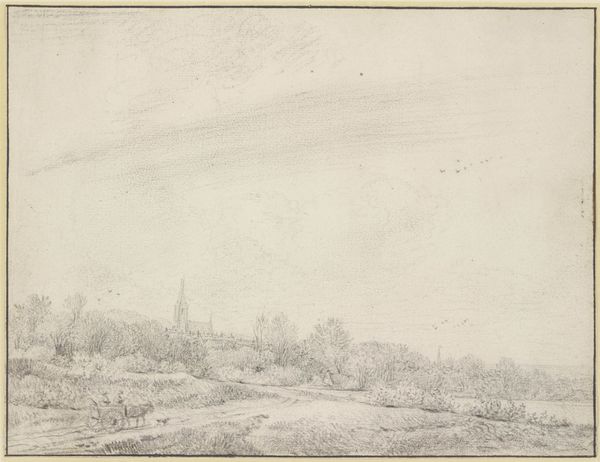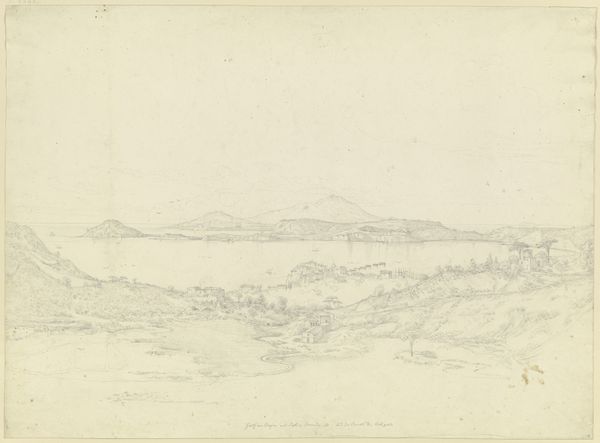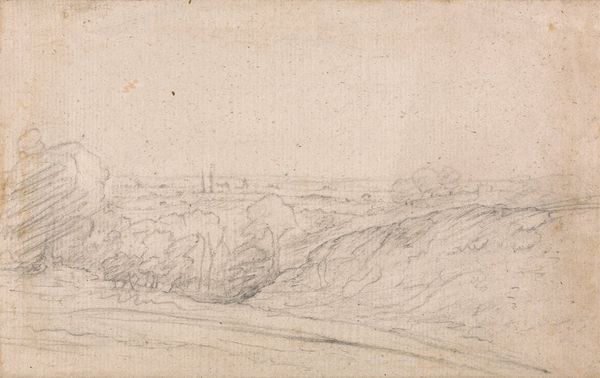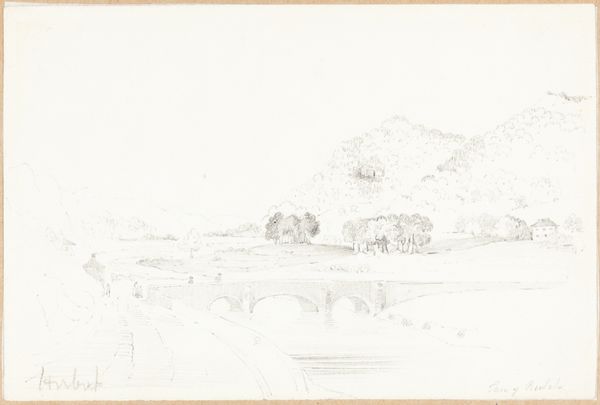
drawing, print, paper, pencil, graphite
#
drawing
# print
#
pencil sketch
#
landscape
#
paper
#
pencil
#
graphite
#
sketchbook drawing
#
cityscape
Dimensions: 165 × 365 mm
Copyright: Public Domain
Curator: This is Joseph Farington's "East North East View of Lancaster," created in 1808 using graphite and pencil on paper. It's a cityscape held within the Art Institute of Chicago’s collection. What are your initial impressions? Editor: It feels very muted and delicate. There’s a quiet stillness in the lines; it reminds me of dawn just before the city wakes. Curator: It's interesting you say that. Farington, despite being a prominent Royal Academician, wasn’t always critically acclaimed. Some saw his landscapes as topographical records rather than imbued with artistic sensibility, judging them lacking emotional depth. Editor: I disagree. Look at the strategic placement of the cathedral against the horizon! The religious symbolism isn't just architectural, it reflects the enduring faith of the community as a kind of civic emblem perched atop the hill. It represents more than just a building, but aspiration and collective hope. Curator: That elevated positioning is quite telling. During this period, Lancaster was evolving as a mercantile center and a port. Perhaps he intended the cathedral's prominence as a marker of the established order, overseeing the burgeoning economic activities. We also see the influence of the Picturesque movement at the time, with the aim of invoking specific emotional responses. Editor: Or perhaps a reminder of spiritual grounding amidst earthly endeavors! Notice how the soft gradations of graphite almost blend the structure with the sky, implying something more than brick and mortar. It acts almost as an allegory, an ascent to divine contemplation. And the light use of the materials allows us to see almost straight through to the past. Curator: A keen observation, bringing up those nuances in texture. Consider also how Farington balanced artistic license with documentary accuracy, reflecting debates about the role of art within broader societal shifts. Did art serve the elite or represent the evolving identities of a nation? The selection of what is deemed “scenic” always bears careful consideration. Editor: That's what makes images powerful through time, this merging of documentary reality with symbolic weight. This deceptively simple sketch provides insight on how humans imprint significance onto landscapes that endures, doesn’t it? Curator: Indeed. And examining Farington through this lens offers such fascinating interpretations regarding his placement in art history.
Comments
No comments
Be the first to comment and join the conversation on the ultimate creative platform.

